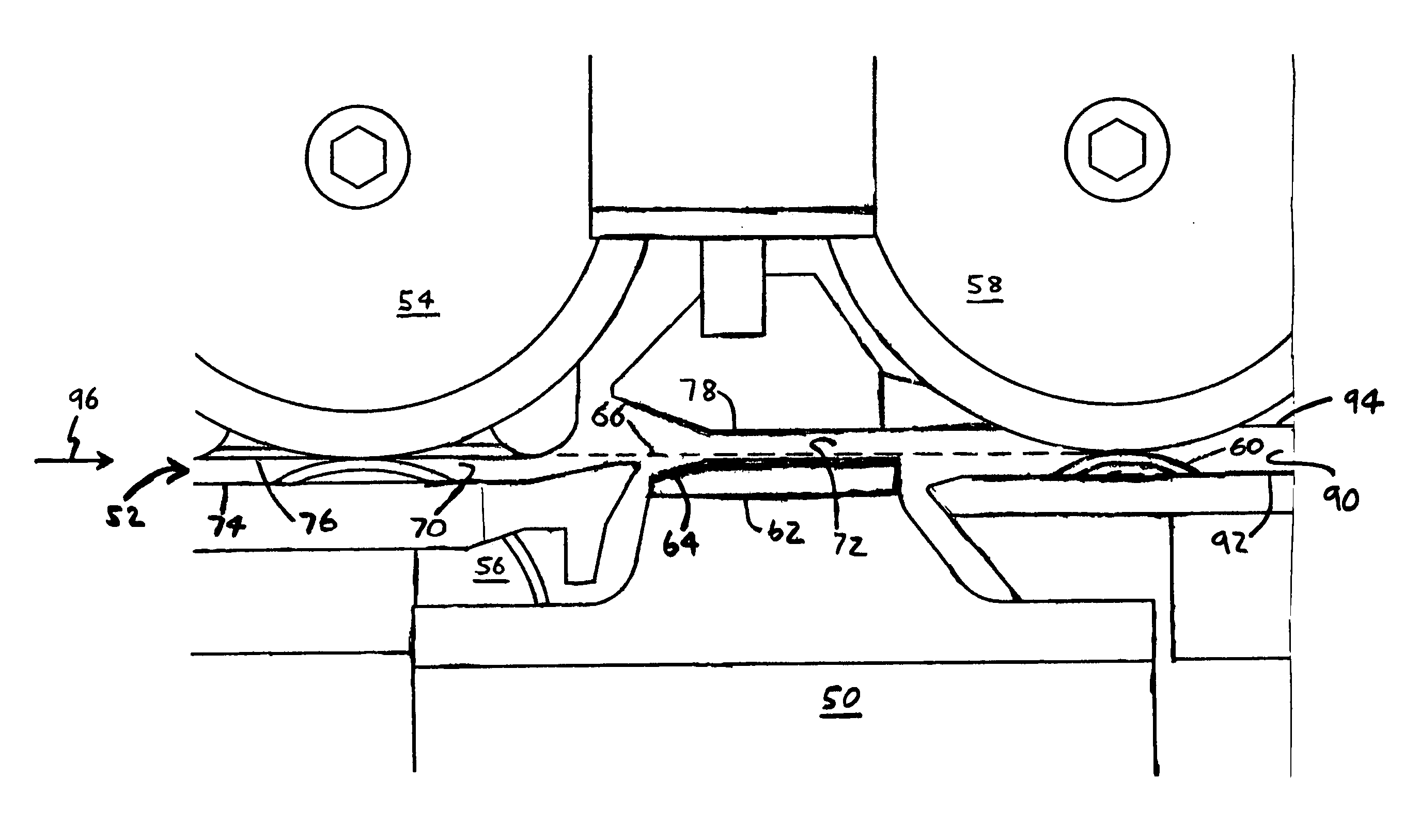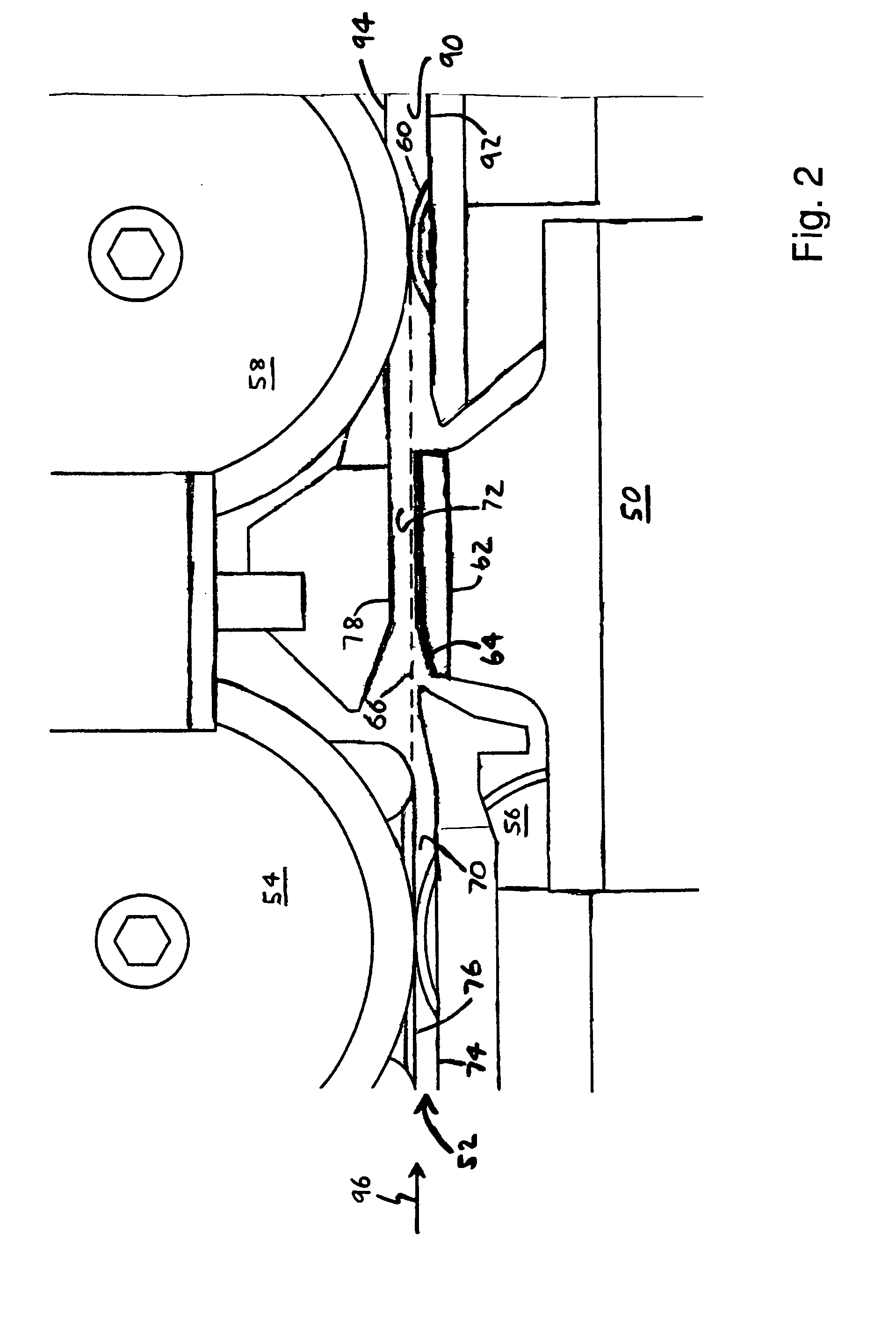Document processing system and document transport / camera interface
a document processing system and document transport technology, applied in the field of document processing and document imaging, can solve the problems of paper dust in the optical path of the image camera, image quality and usability degradation, and the inability to meet the needs of users, so as to prevent the upset of a passing document, reduce the accumulation of dust, and prevent the effect of dust accumulation
- Summary
- Abstract
- Description
- Claims
- Application Information
AI Technical Summary
Benefits of technology
Problems solved by technology
Method used
Image
Examples
Embodiment Construction
[0021]FIG. 1 illustrates a document processing system for feeding and transporting documents at 10. System 10 includes a primary feeder 12 and a secondary feeder 14. Cabinet 16 houses a computer running software for system 10. System 10 further includes removable kneewell panel 18. The feeders act to separate and feed documents singly, in order, from a stack. The remainder of the system is the transporting portion of the system, which includes a number of roller pairs and / or belts to convey the documents, one at a time, through a track past other processing devices that perform operations on the documents.
[0022]As shown in FIG. 1, a number of processing devices are located in the transporting portion of the system 10. Magnetic ink character recognition (MICR) reader 20 and optical character recognition (OCR) reader 22 are located in the document track following secondary feeder 14. As well, upstream imaging devices 24 and 26 image the front side and rear side of each passing documen...
PUM
 Login to View More
Login to View More Abstract
Description
Claims
Application Information
 Login to View More
Login to View More - R&D
- Intellectual Property
- Life Sciences
- Materials
- Tech Scout
- Unparalleled Data Quality
- Higher Quality Content
- 60% Fewer Hallucinations
Browse by: Latest US Patents, China's latest patents, Technical Efficacy Thesaurus, Application Domain, Technology Topic, Popular Technical Reports.
© 2025 PatSnap. All rights reserved.Legal|Privacy policy|Modern Slavery Act Transparency Statement|Sitemap|About US| Contact US: help@patsnap.com



